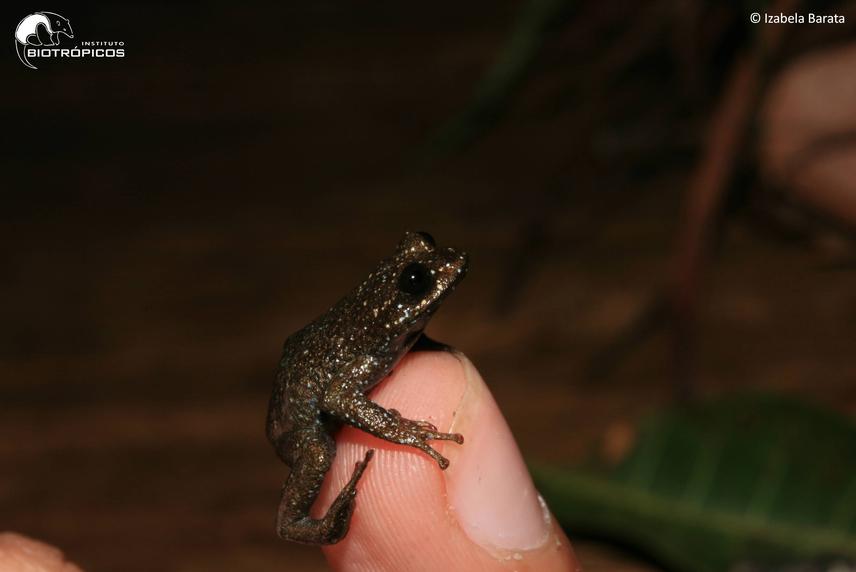Izabela Menezes Barata
Other projects
22 Aug 2014
Monitoring the Effects of Climate Change of a Threatened Mountaintop Amphibian Population
Crossodactylodes itambe belongs to a rare group of frogs living on highlands of Atlantic Rainforest and are strictly dependent on bromeliads. Species lives in a single location and estimated area of occurrence is less than 0.5 km2. Although fully located in a protected area, a recent fire destroyed more than half of species habitat and the only known population can now be facing a severe decline. We aim to evaluate the effects of fire on the dynamics of this threatened population using continuous monitoring data from before and after the fire event.

Crossodactylodes-itambe.
There is little information on fire ecology on animal populations and even fewer studies focusing on amphibians. The major contribution of this project is to understand the effects of fire on populations that are threatened or under extinction risk. Crossodactylodes encompasses five frog species strictly depend on bromeliads and are endemic to highlands in the Atlantic Rainforest, Brazil. Species are strictly dependent on bromeliad where individuals spend their entire life cycle.
Crossodactylodes itambe is endemic to one mountaintop and occurs in a single species of bromeliad only from 1800 m a.s.l. Considering that the fire affected the area of occurrence of our target species, we believe species might be facing a great new threat. Because the bromeliad was recently found in surrounding mountaintops, we believe that new populations can be found during field work, which will increases chances of safeguarding the species from stochastic events. We are also testing the use of a new method (environmental DNA) which can detect species with water samples. We believe our results will have great contribution with the use of eDNA method. Because of costs and implications for species assessments, improvements on monitoring schemes has important implications for long term conservation practice and should be further investigated.
Overall, this project will contribute to the National Action Plan for Amphibian Conservation at South Espinhaço Range, which was first delivered in 2012. Crossodactylodes itambe is one of the targets and this project will contribute to at least five guidelines established for species conservation. Not only results will be reported to the National Action Plan, but will also allow the first species assessment following the IUCN guidelines. Species assessments are based on multiple criteria, such as criterion A that requires information on decline in abundance, area of occupancy or extent of occurrence of target species. Our data will overcome this knowledge gap that restricts species to be adequately assessed into one of the threaten categories proposed by the IUCN.